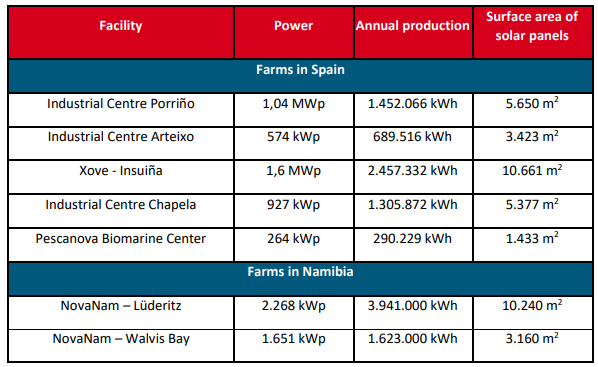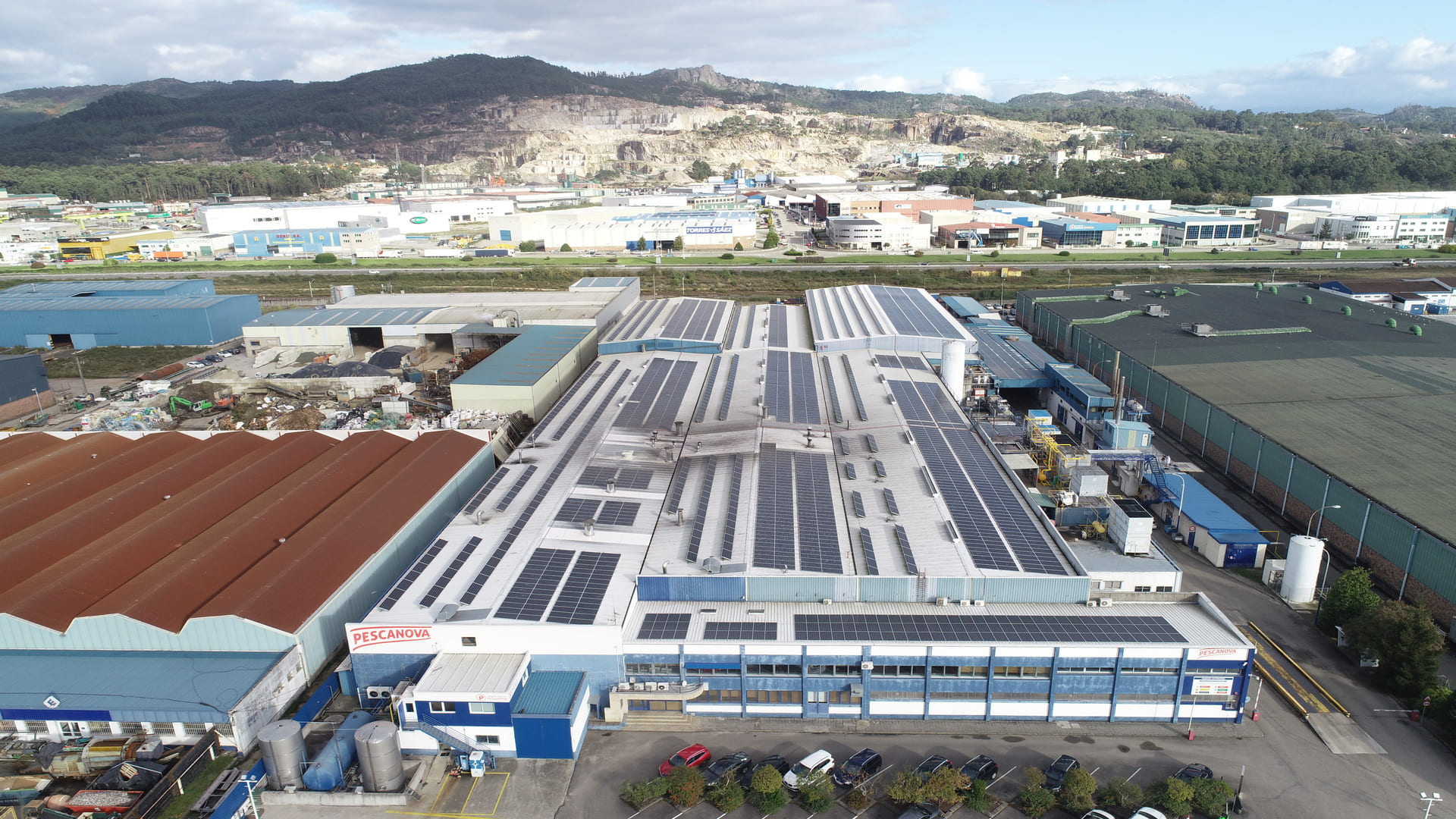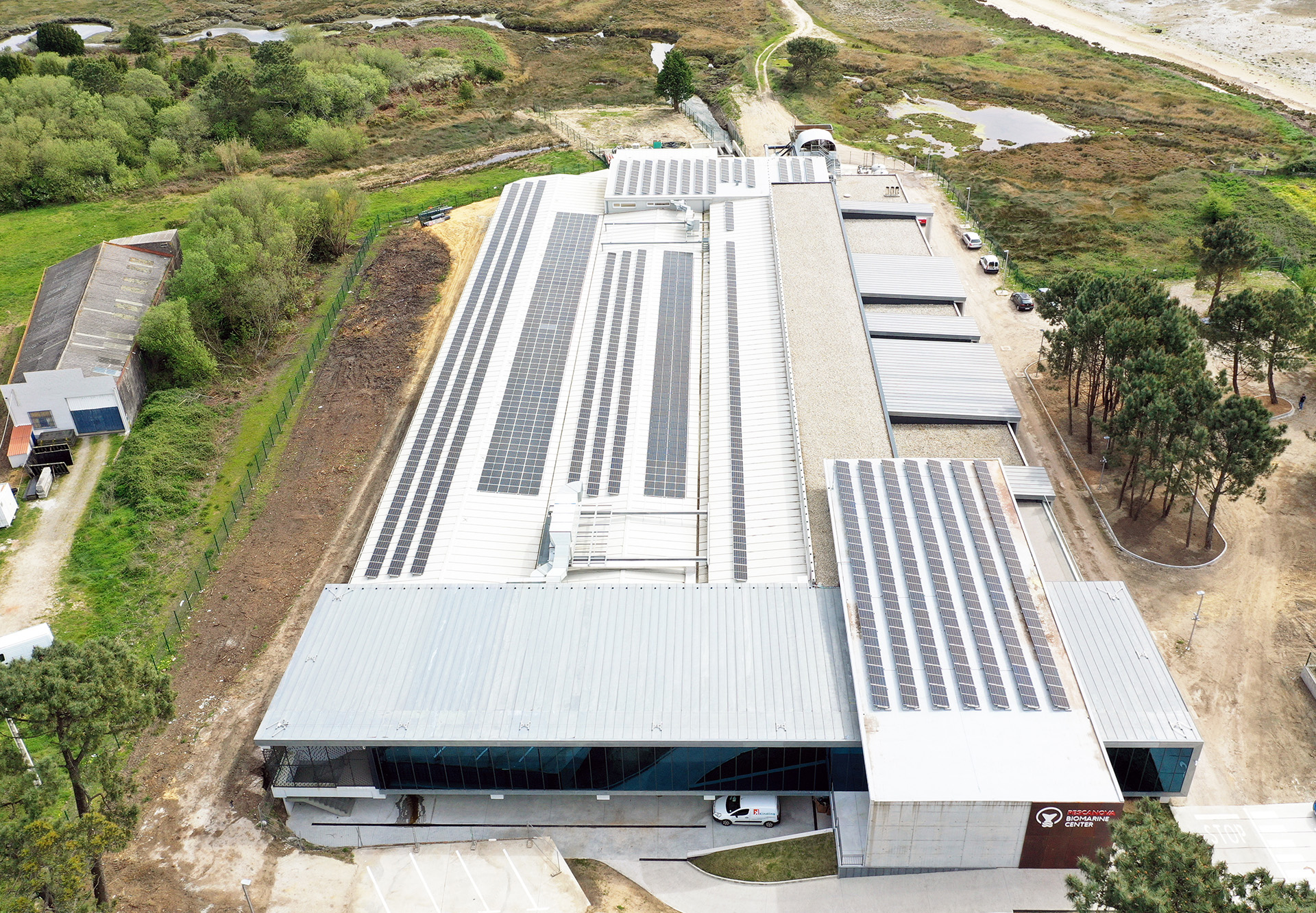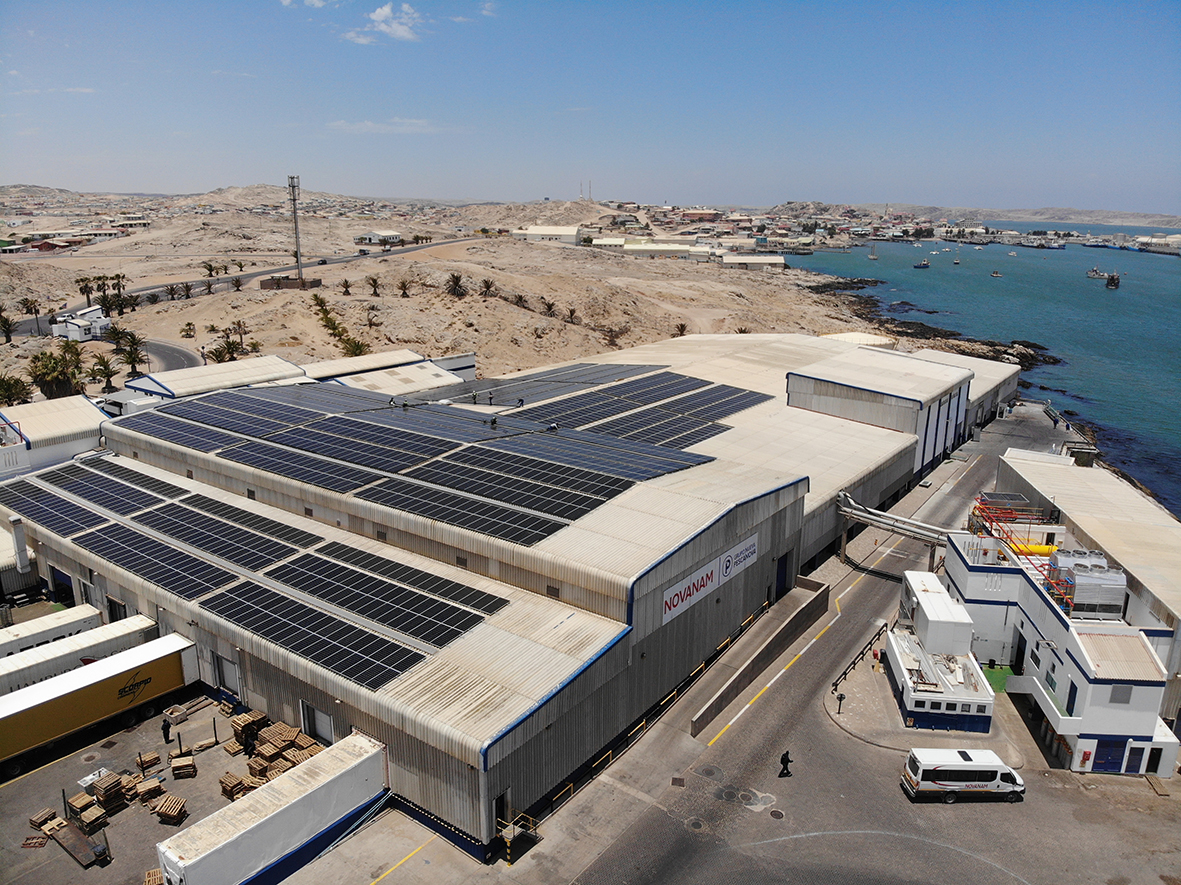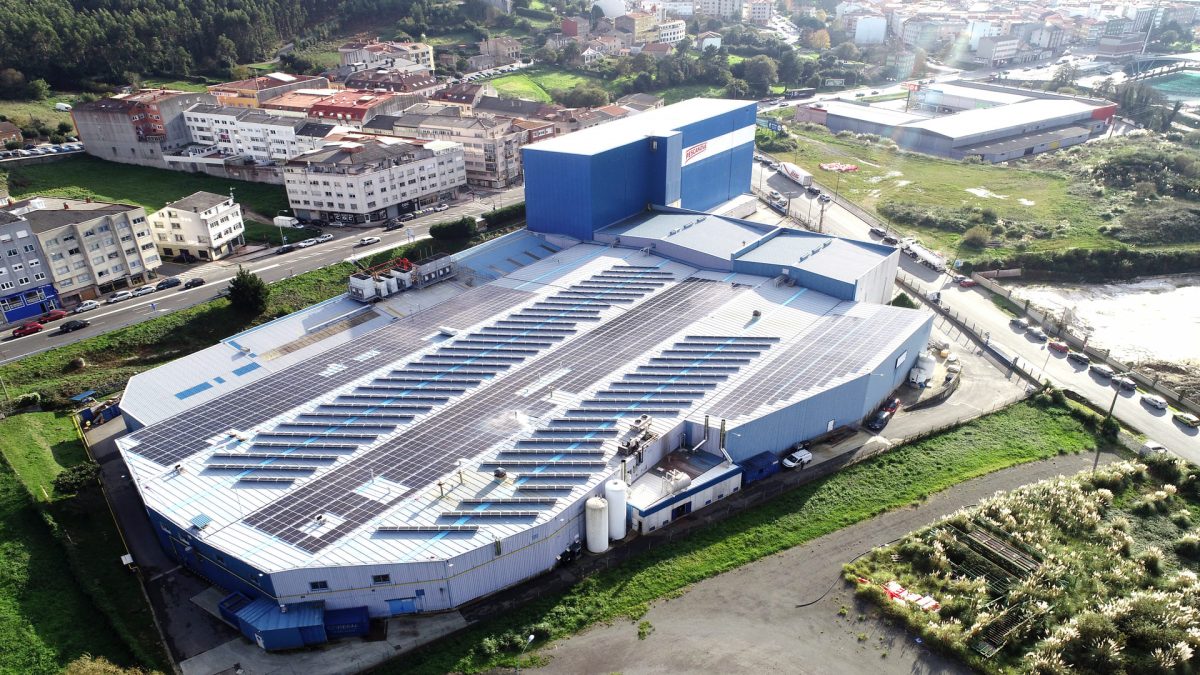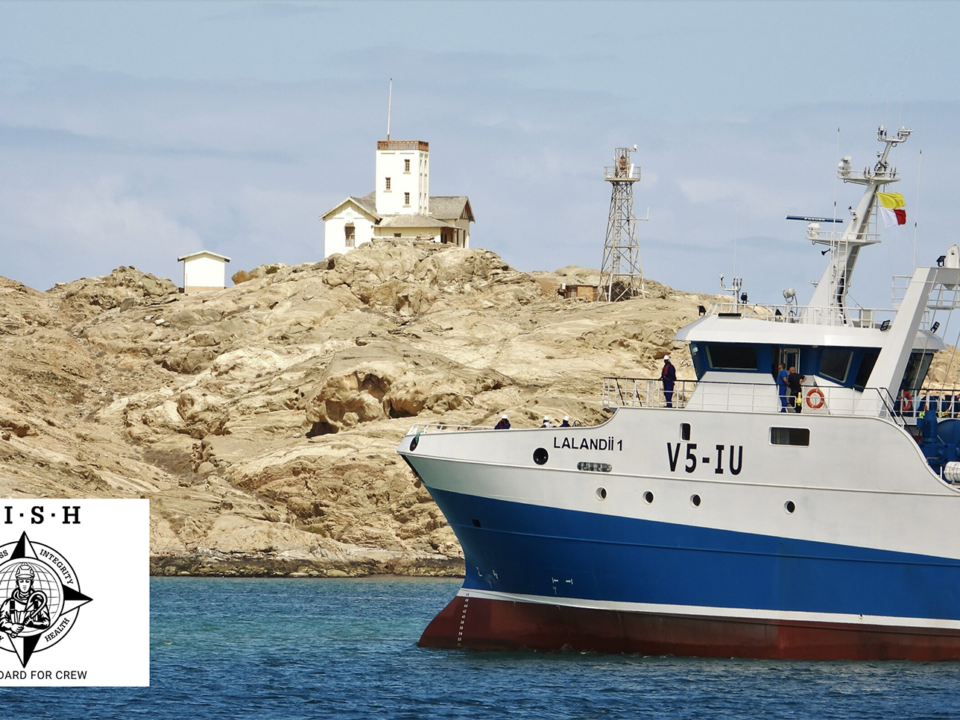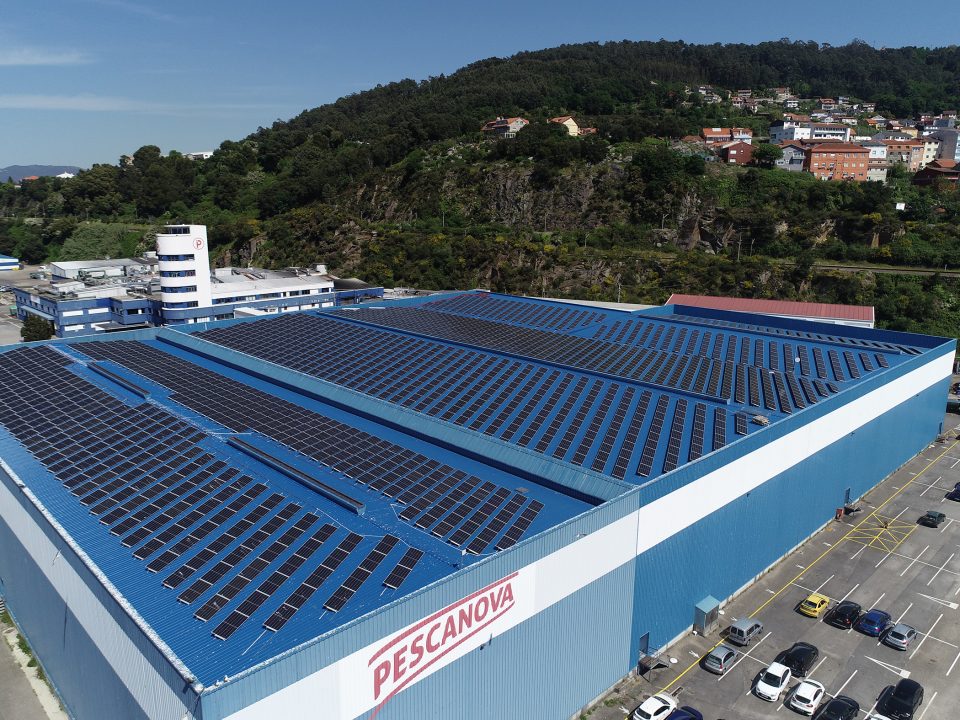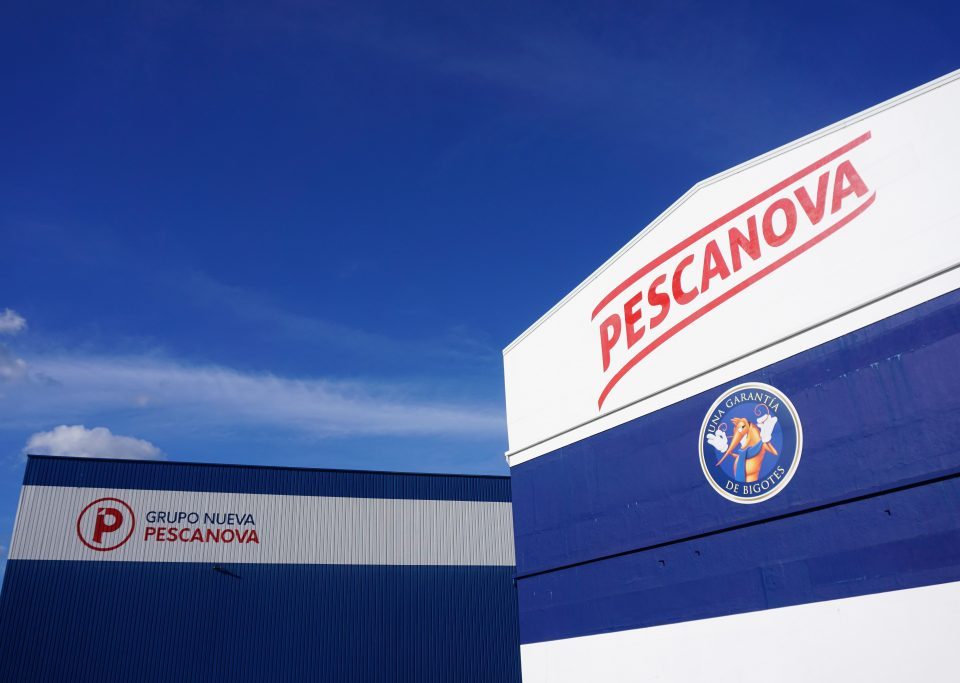
Nueva Pescanova celebrates the delivery of its new vessel for Mozambique, the “Ponta Timbue”
15 March, 2021
Nueva Pescanova leads the Sea2Table 4.0 project to implement a new smart factory model
22 April, 2021- The new solar self-consumption photovoltaic farms are located at the industrial centres of Chapela and Porriño (Pontevedra), Arteixo (A Coruña), in the turbot production plant of Xove (Lugo), at the Pescanova Biomarine Center of O Grove (Pontevedra) and in Ludëritz and Walvis Bay (Namibia).
- The installations, with a total of 40 thousand square metres of photovoltaic modules, will produce an annual energy of more than 11,759,000 kWh, equivalent to the electricity consumption of more than 3,150 Spanish households.
- The Nueva Pescanova Group will reduce its CO2 emissions into the atmosphere by reducing its carbon footprint, which will have a positive effect on air quality. For the new installations in Spain alone, this would be equivalent to what would be generated by planting 210.631 trees.
- The company EiDF Solar is in charge of the Nueva Pescanova self-consumption projects in Spain.
Vigo, 15 April 2021 – In line with its commitment to the objectives of the 2030 Agenda and the sustainable management of resources, the Nueva Pescanova Group has embraced photovoltaic self-consumption, with the implementation of seven photovoltaic farms in its facilities in Spain and Namibia, with a total of 40,000 square metres of solar panels. The estimated annual production exceeds 11,759,000 kWh, equivalent to the average annual consumption of more than 3,150 Spanish households.
Five of the new photovoltaic farms are located in some of the Group’s facilities in Galicia, more precisely at the industrial centres of Chapela, O Porriño and Arteixo; in the turbot aquaculture plant in Xove (Lugo) and at the Biomarine Center Pescanova, based in O Grove (Pontevedra). With more than 26,000 square metres of solar panels, they are all expected to be 100% operational by the end of the first semester, resulting in electricity savings of between 14% and 37%, depending on the size of each installation. These solar farms will avoid CO2 emissions equivalent to the planting of over 210.631 trees. The company commissioned to carry out the projects is EiDF Solar, a specialist in the design and construction of self-consumption installations for industry, with more than 2,000 projects completed throughout the country.
The Nueva Pescanova Group has also undertaken photovoltaic projects in Namibia, where more than 13,000 square metres of solar panels have been installed. In Lüderitz, where it owns the largest hake processing plant in Africa, the photovoltaic farm went into operation in 2019 and has already been expanded due to its high performance. In 2020, a farm was installed at the Walvis Bay plant, which is being expanded and will be fully operational by the end of 2021. The percentage of self-consumption of clean energy that will be achieved in these two plants will be approximately 31.27% and 41.55%, respectively. The company in charge of this project was SolarSaver, a Namibian company specialised in the commercialisation of solar photovoltaic systems, which has already implemented more than 120 projects of this type in the country.
Furthermore, in the next few months, it is expected that work will begin to add photovoltaic installations to the two industrial centres owned by Nueva Pescanova in the Valencia Community, which, like the rest of the projects in Spain, will be carried out by EiDF Solar.
Ignacio González, CEO of the Nueva Pescanova Group, emphasises the strategic component of these actions: ‘Moving towards self-consumption, as in the case of Namibia, puts us in a privileged position in terms of production. With these photovoltaic installations, in addition to the environmental advantage of using non-polluting energy, we can guarantee production regardless of any power cuts that may occur.’
Group photovoltaic farms in figures
